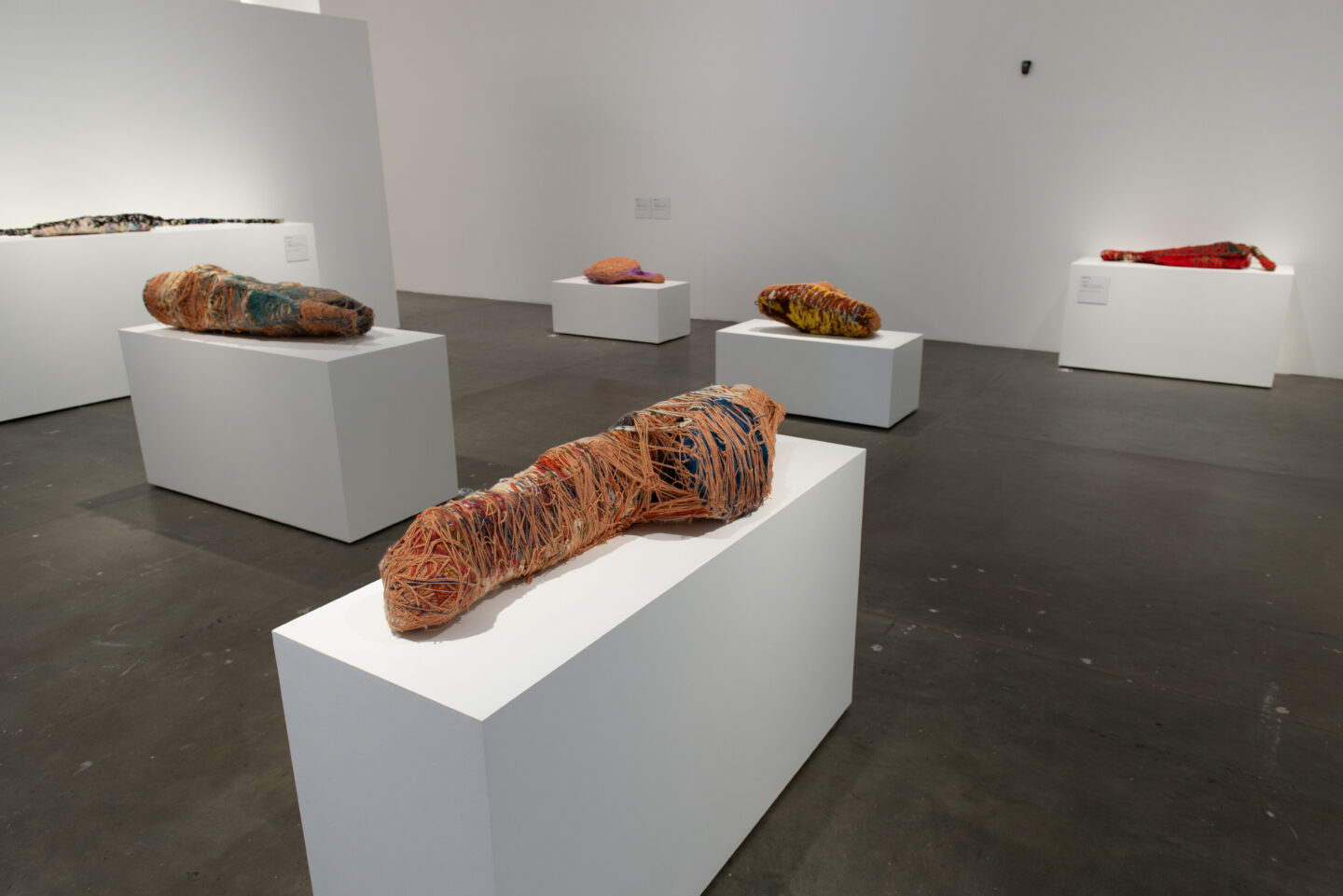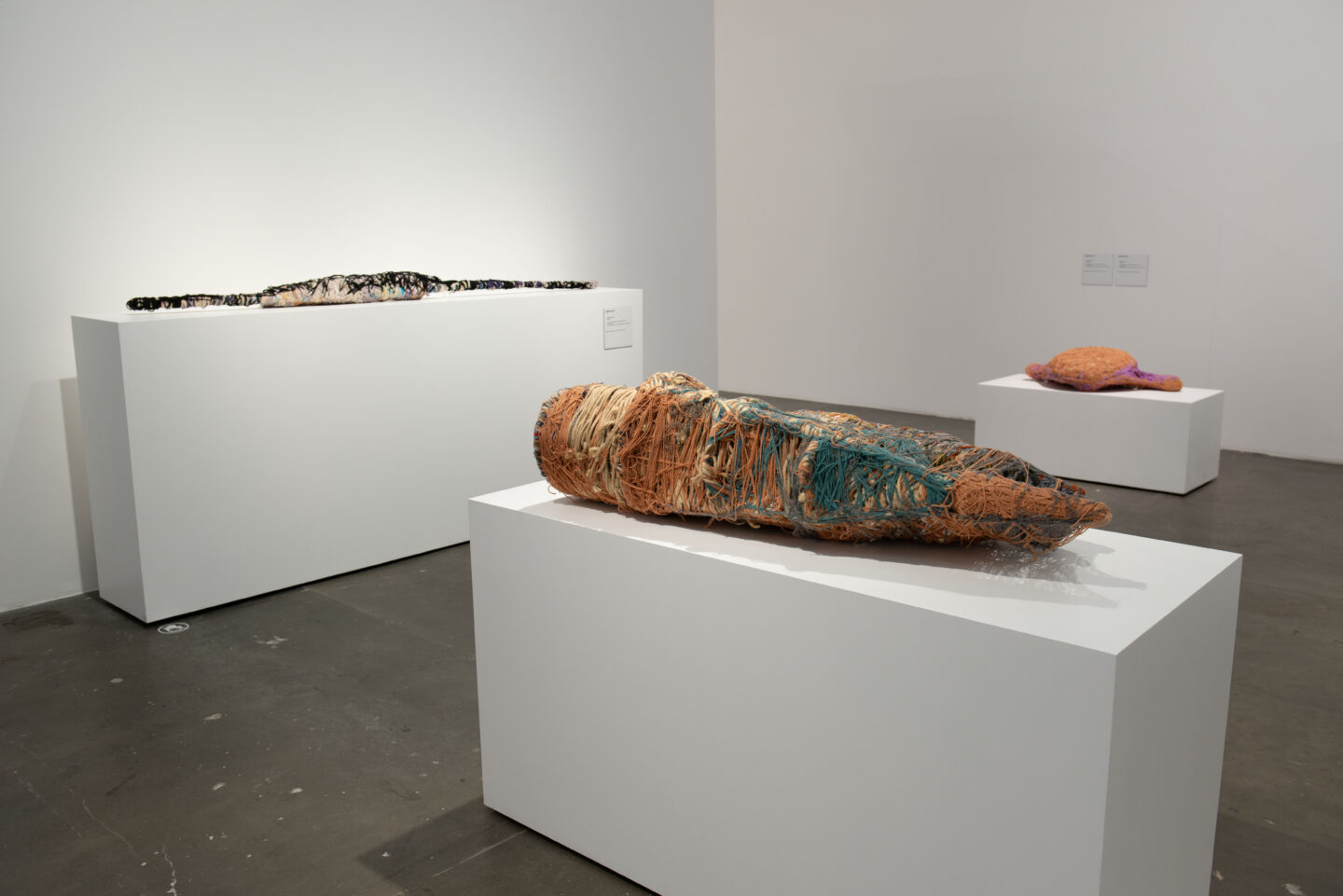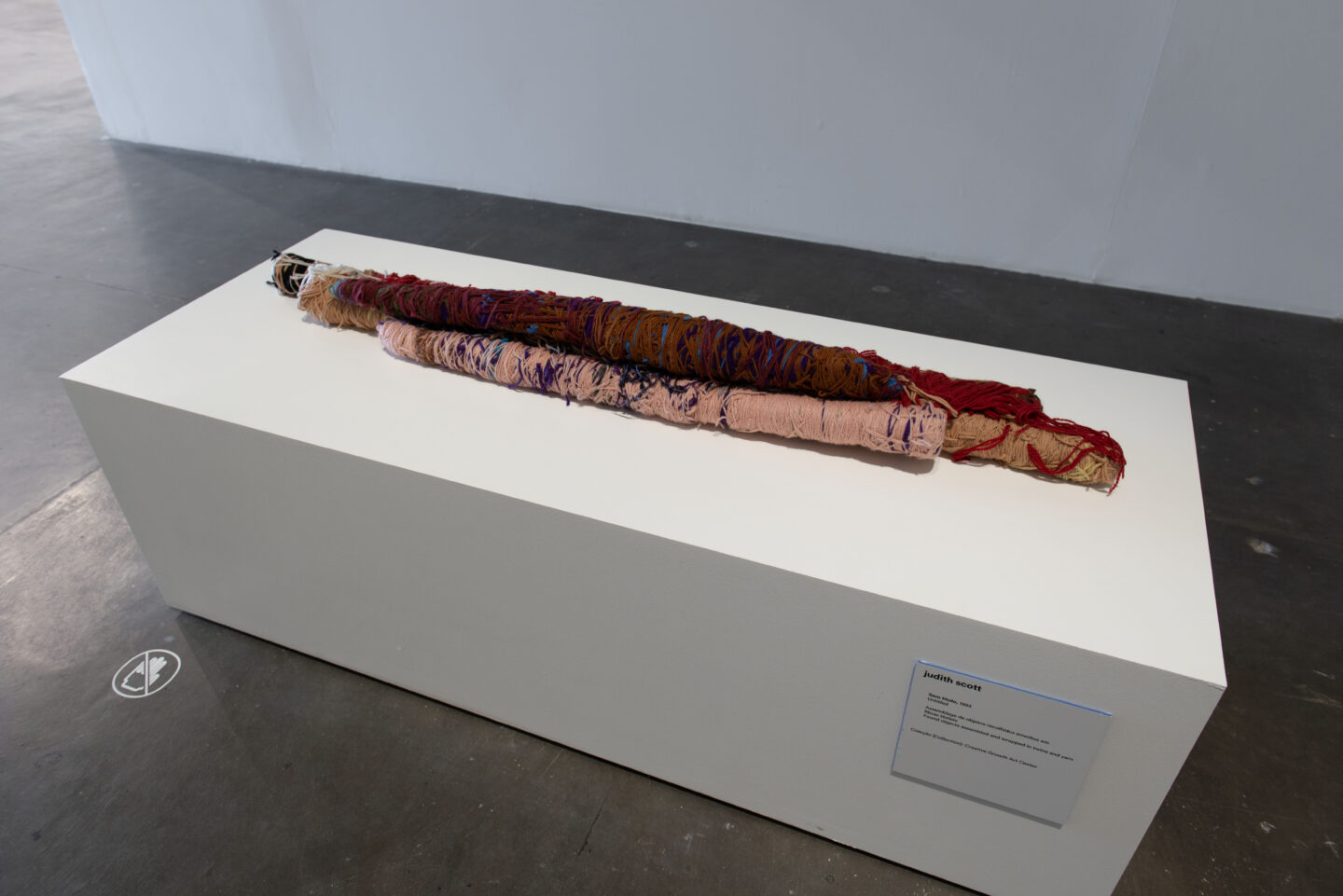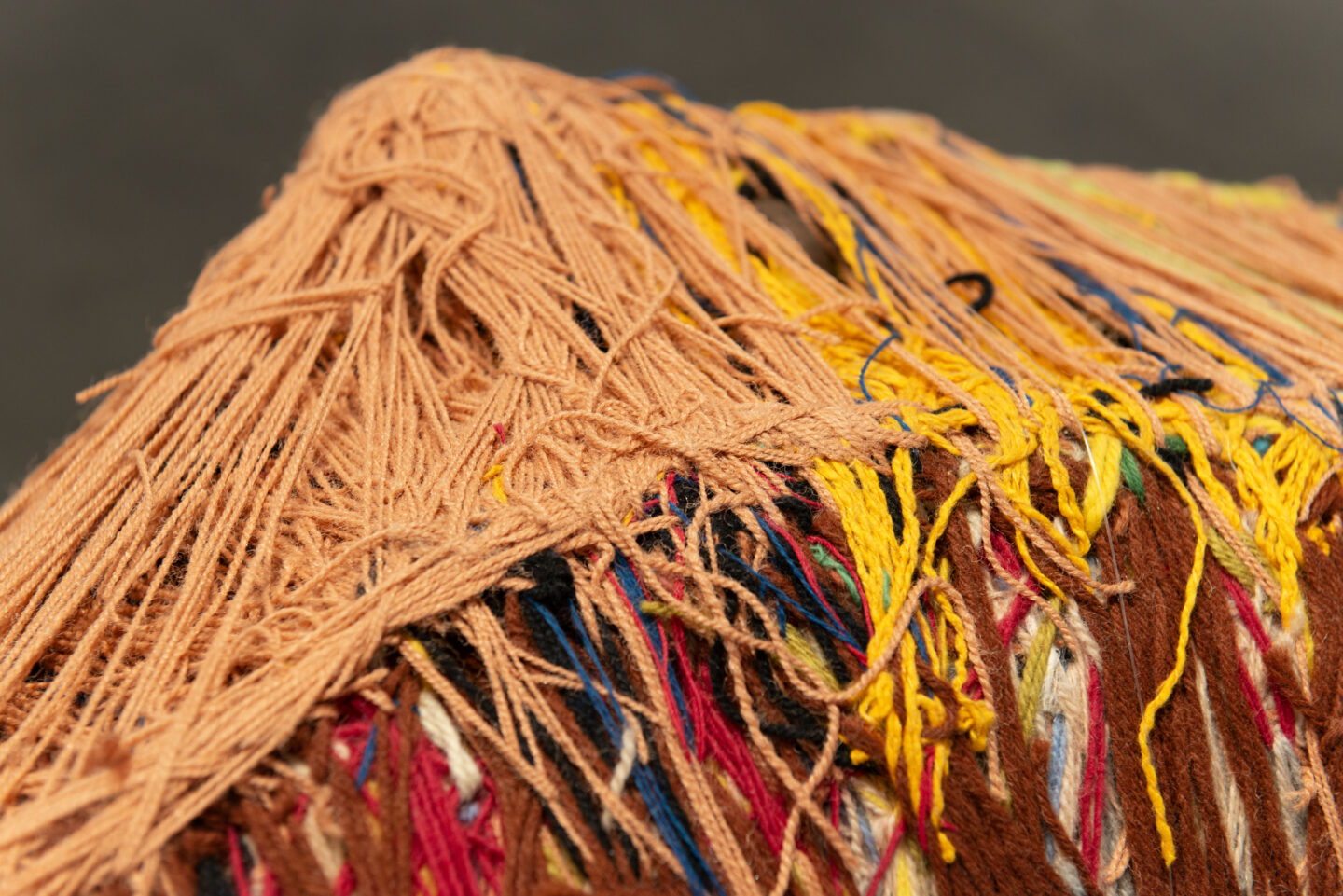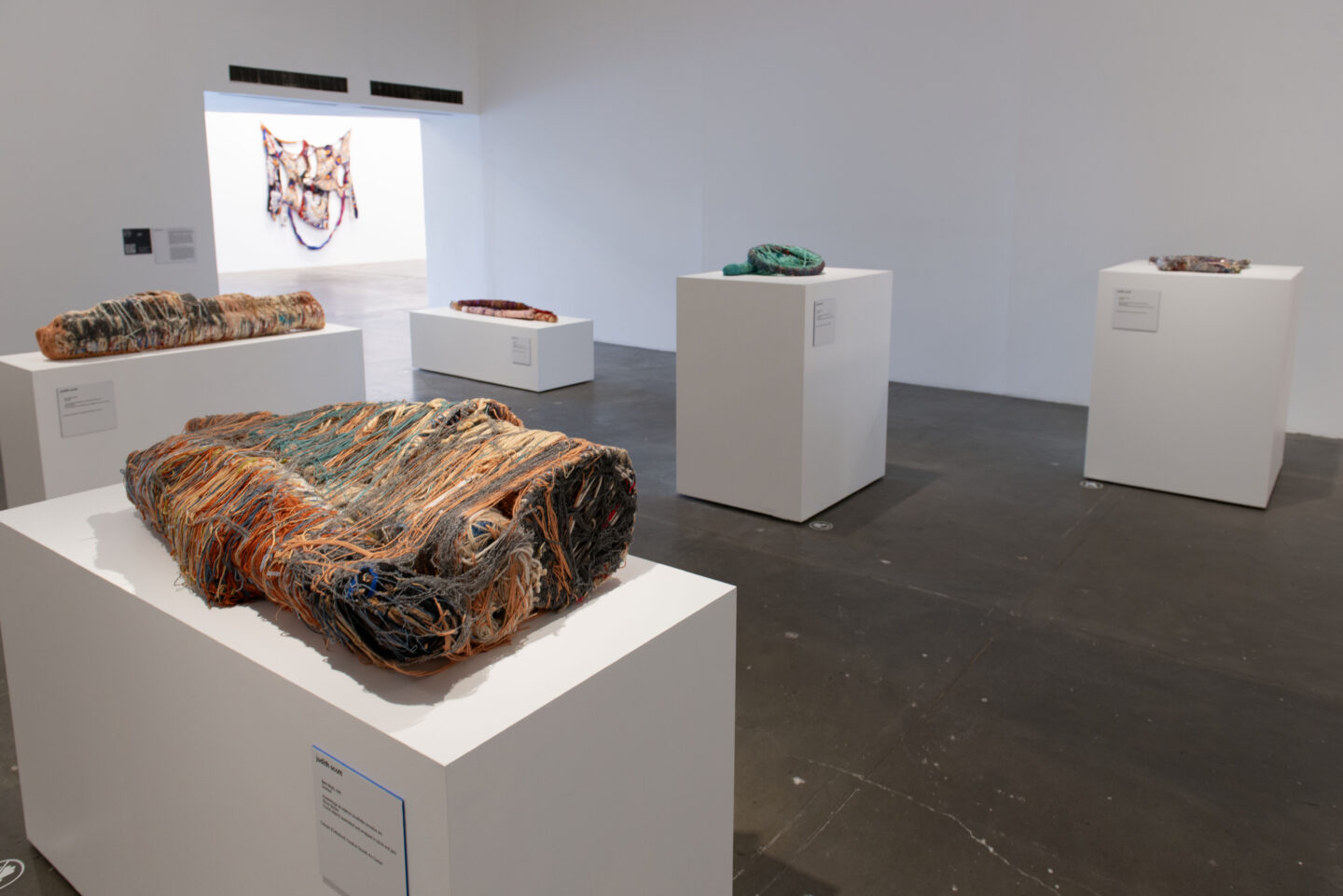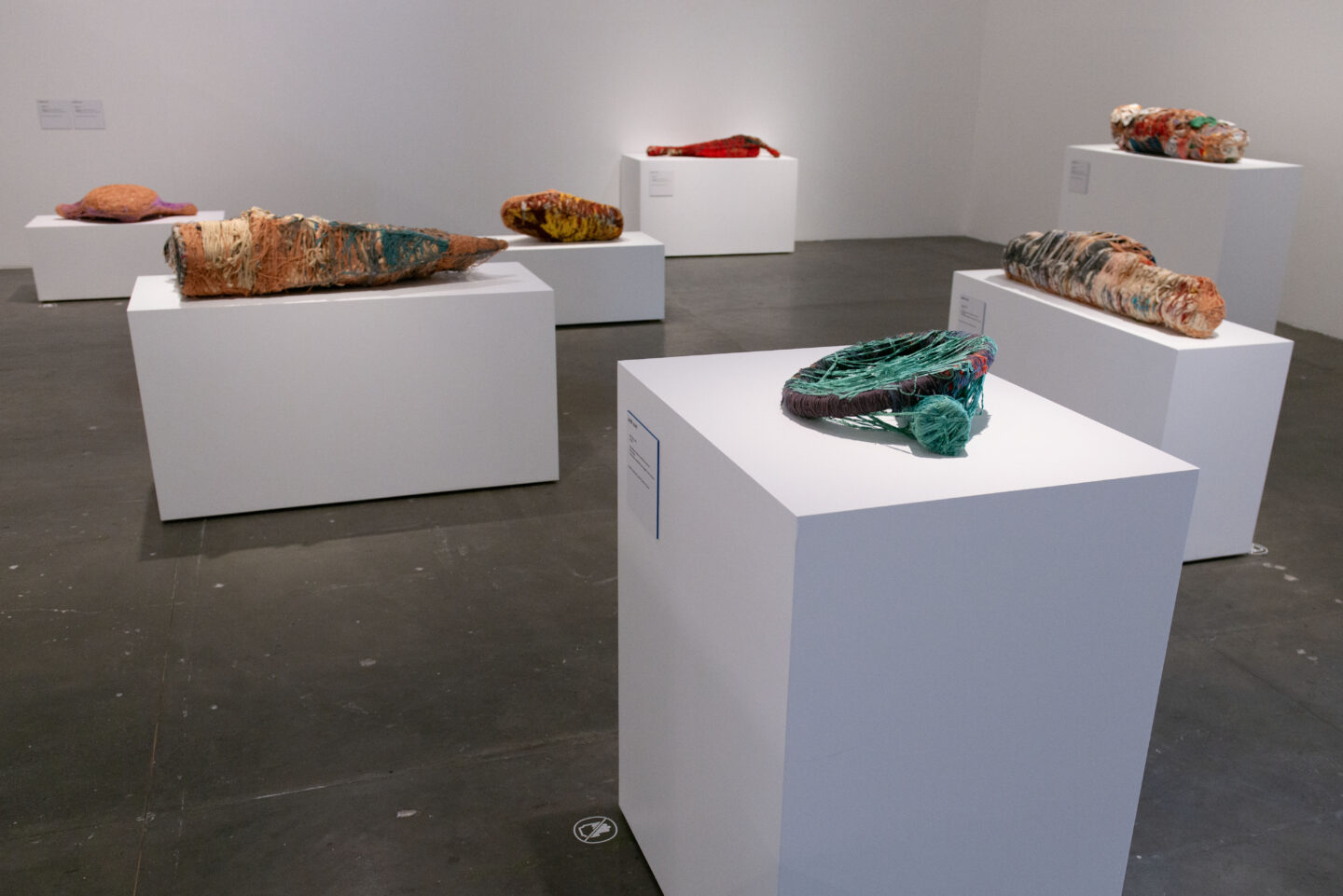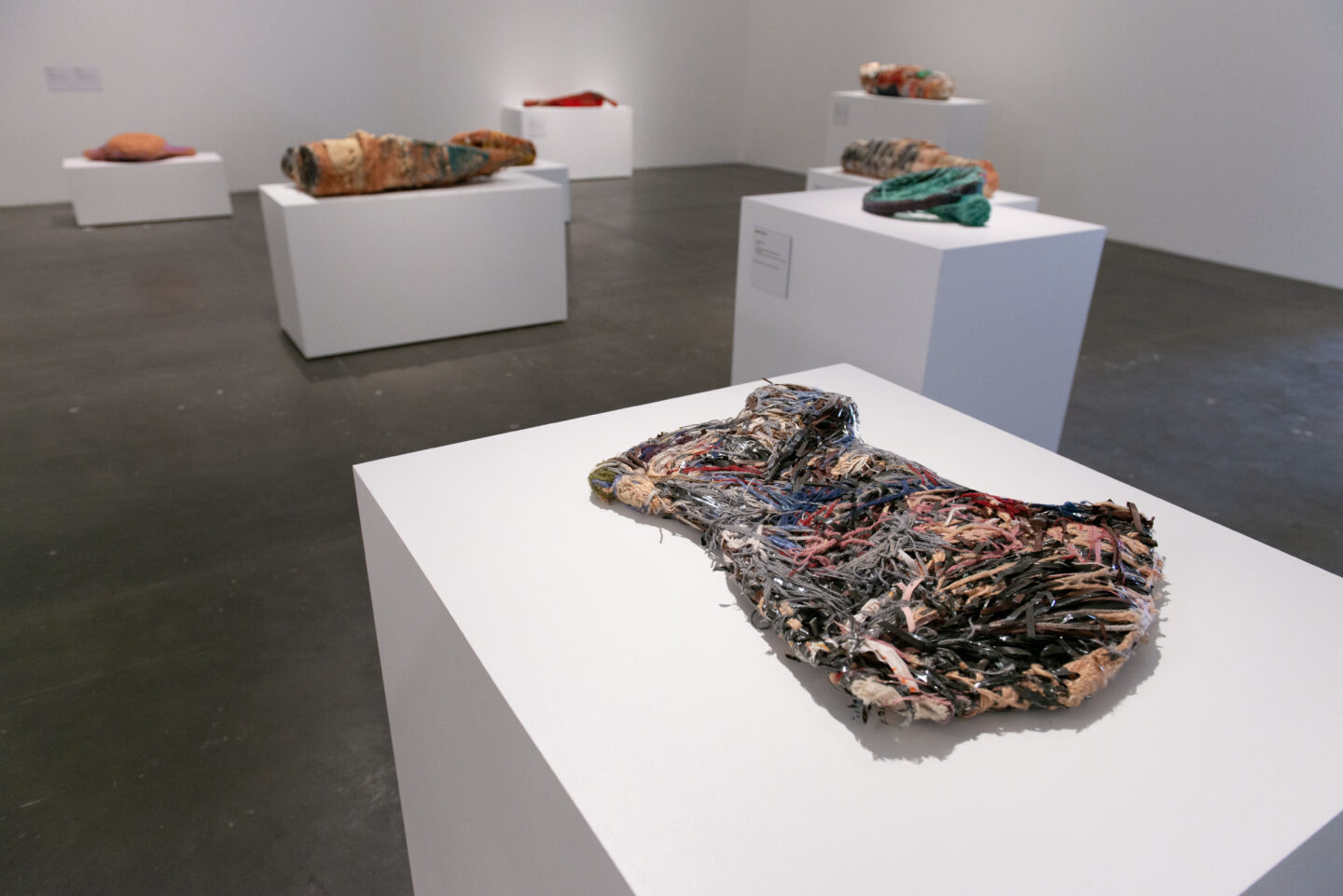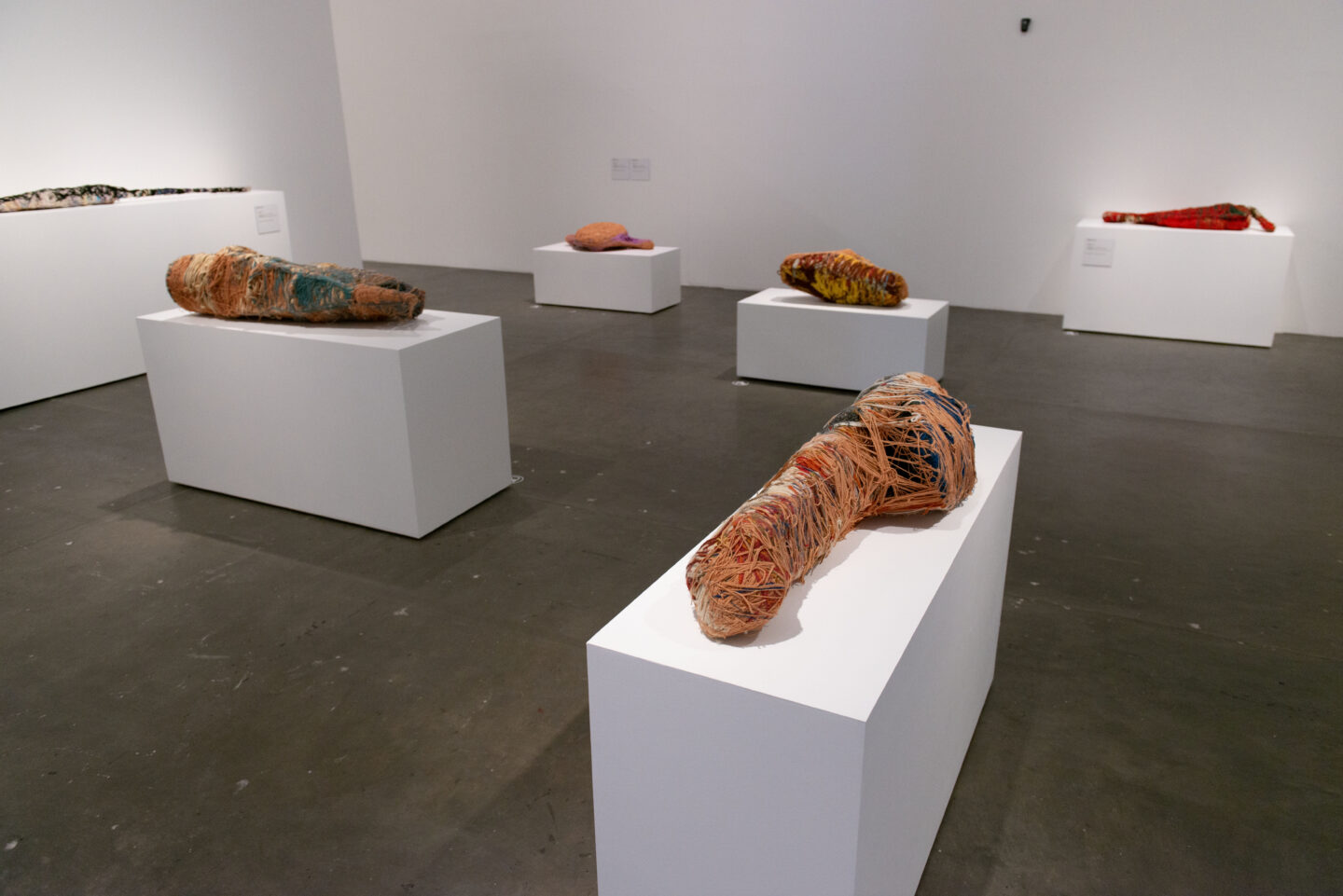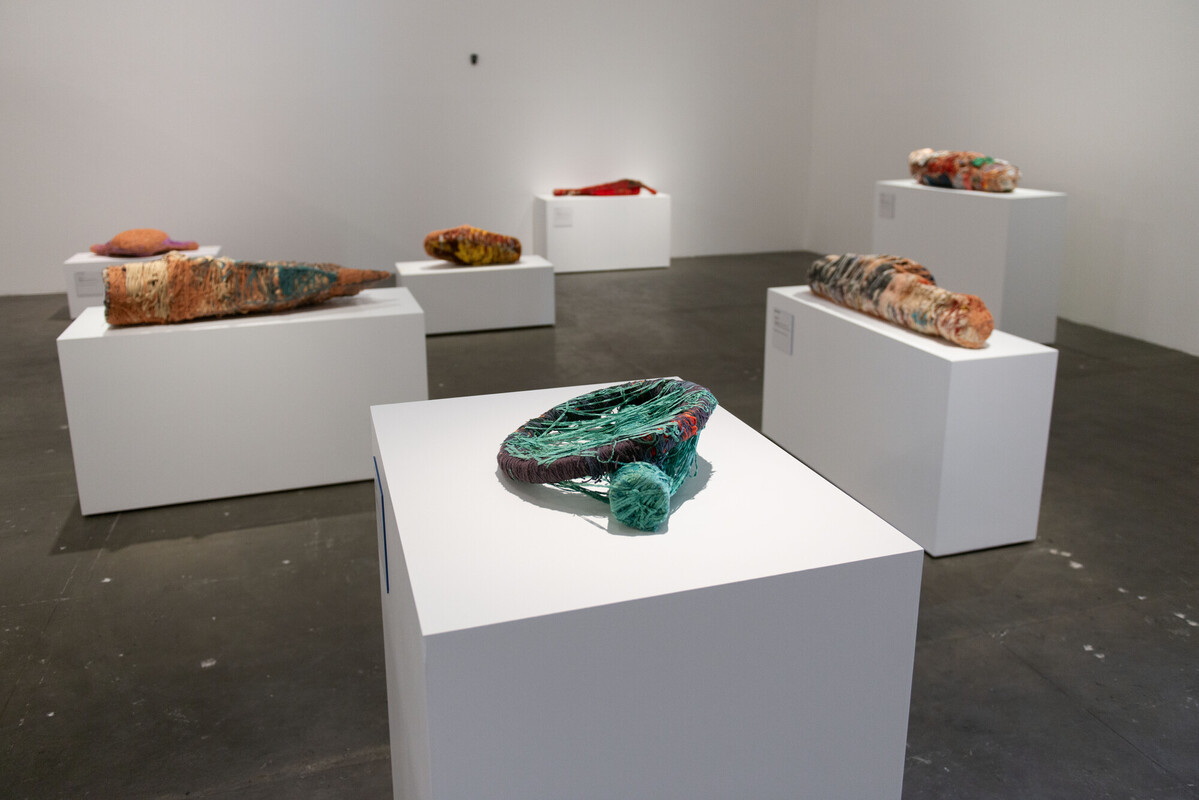
Judith Scott
Judith Scott made her first sculptures in 1988. Although their forms became more complex over time, they all shared a similar principle: a nuclear structure of found objects wrapped in lattices of wool, fabric, and other everyday items.
Sometimes, her colorful compositions are open structures, which reveal the myriad of material extensions that underlie its interior. At other times, their threads are entangled in compact and labyrinthine frameworks, whose entrails can only be revealed through radiographic processes.
In more than a decade and a half of tireless production, the artist never titled her pieces. Nor did she indicate how they were to be exhibited or leave records of her thoughts about them. In the absence of a narrative, when Scott began to attract critical attention, a number of labels and attempts at interpretation appeared around her work. Many of these arguments sought support outside the artistic element, in recourse to her elliptical biography or in the reduction of her practice to preconceived classifications.
However, precisely because they are inscrutable, her works – between the magical and the everyday, the real and the veiled – resist being classified. They are inscribed in the enigma, in those impossible choreographies that escape the rigidity of the univocal and remind us that the meaning of an artistic object always remains unfinished and incomplete: irreducible to a given discourse, imagination or system of mediation.
beatriz martínez hijazo
translated from Spanish by ana laura borro
- Vista das obras de Judith Scott durante a 35ª Bienal de São Paulo – coreografias do impossível © Levi Fanan / Fundação Bienal de São Paulo
- Vista das obras de Judith Scott durante a 35ª Bienal de São Paulo – coreografias do impossível © Levi Fanan / Fundação Bienal de São Paulo
- Vista das obras de Judith Scott durante a 35ª Bienal de São Paulo – coreografias do impossível © Levi Fanan / Fundação Bienal de São Paulo
- Detalhe de obra de Judith Scott durante a 35ª Bienal de São Paulo – coreografias do impossível © Levi Fanan / Fundação Bienal de São Paulo
- Vista das obras de Judith Scott durante a 35ª Bienal de São Paulo – coreografias do impossível © Levi Fanan / Fundação Bienal de São Paulo
- Vista das obras de Judith Scott durante a 35ª Bienal de São Paulo – coreografias do impossível © Levi Fanan / Fundação Bienal de São Paulo
- Vista das obras de Judith Scott durante a 35ª Bienal de São Paulo – coreografias do impossível © Levi Fanan / Fundação Bienal de São Paulo
- Vista das obras de Judith Scott durante a 35ª Bienal de São Paulo – coreografias do impossível © Levi Fanan / Fundação Bienal de São Paulo
Judith Scott (Cincinnati, OH, USA, 1943 – Dutch Flat, CA, USA, 2005) was a sculptor. She was born with Down’s syndrome and, at the age of seven, was held in a psychiatric institution, remaining isolated for over thirty years. Afterwards, she was diagnosed with deafness, and did not develop oral language. She didn’t have access to education. The creation of her works took place over seventeen years, following her stay at the Creative Growth Art Center (Oakland, CA, USA). Her works have been exhibited in spaces such as the Brooklyn Museum and MoMA (New York, USA).

 Português
Português